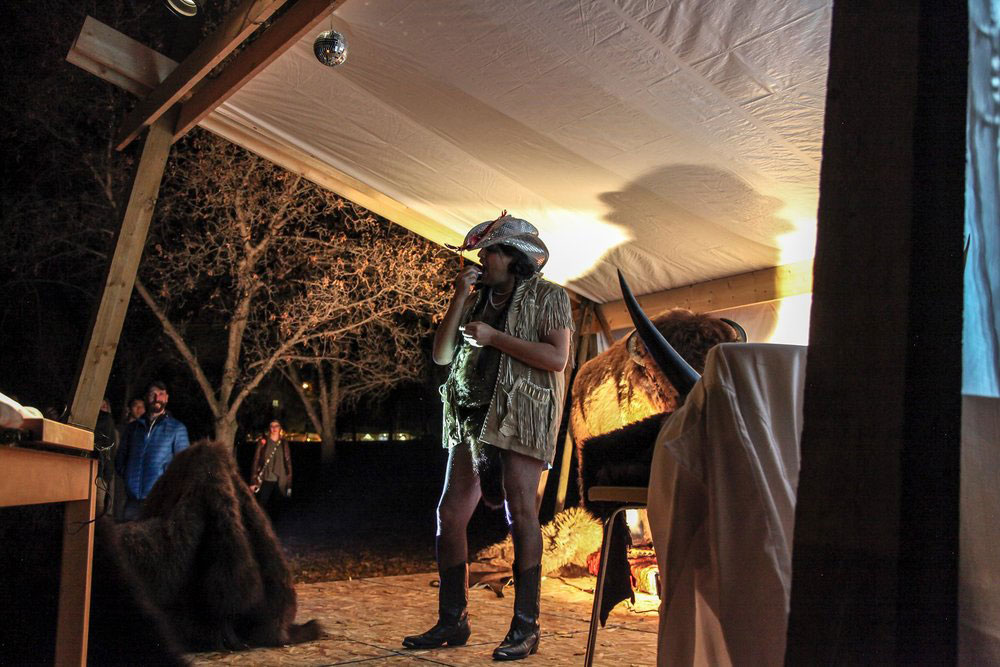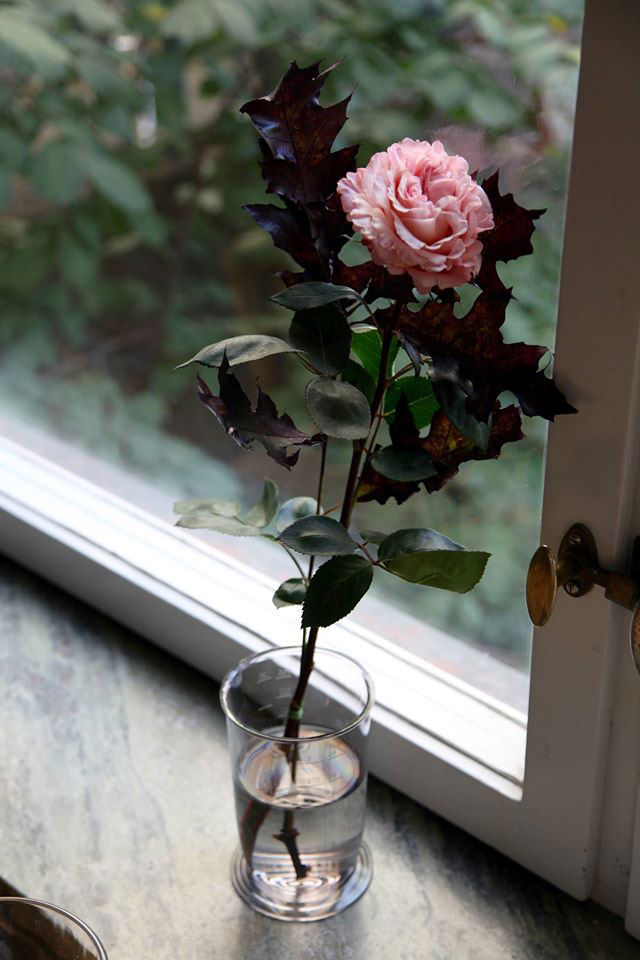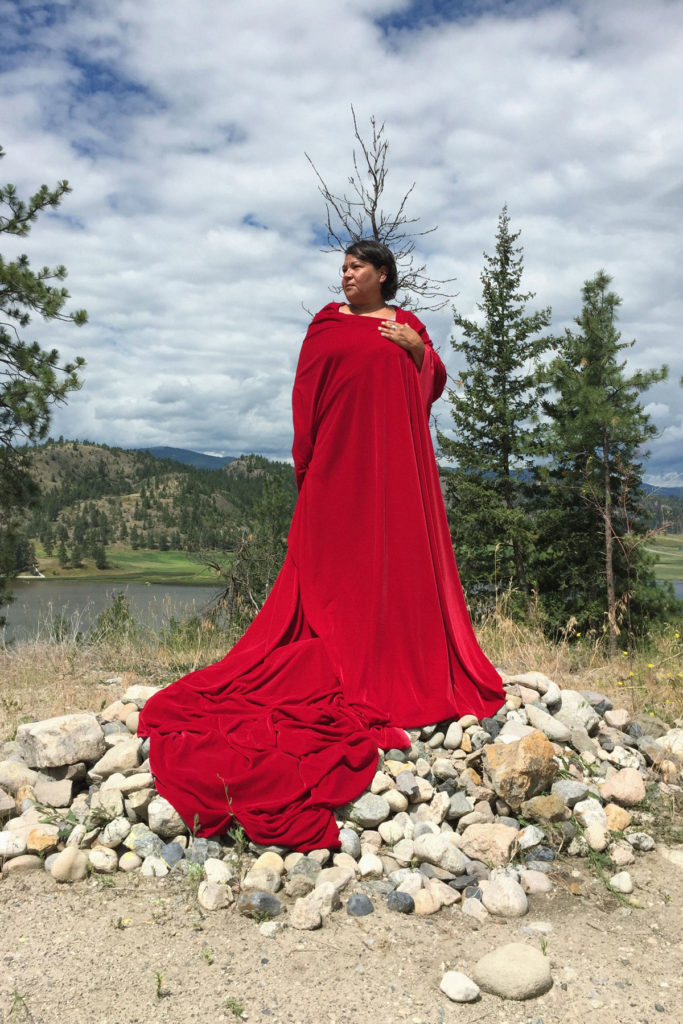Saskatchewan has such a diversity of activity that my colleagues and I often lament the difficulty we have making it out of our own cities. Here are some of the people, events and forces that come to mind as I reflect on 2016 and what it has wrought, here in Saskatoon—the “Paris of the Prairies”—and elsewhere.
Lori Blondeau, Adrian Stimson and Collective Action
“She often seems delighted by the performance of being herself.” Rachel Aviv recently used these words to describe philosopher Martha Nussbaum, but they make me think of Lori Blondeau. Blondeau’s life is an example of conviction, wit and generosity.
In 2016, in addition to her role as the director of Tribe Inc., Blondeau was a senior artist in UBC’s Summer Indigenous Art Intensive Program (with Rebecca Belmore, David Garneau and Adrian Stimson), where together with Belmore and Stimson she performed The School of Badger. She opened the solo exhibition “Asiniy Iskwew” at Urban Shaman, performed at Nuit Blanche Winnipeg and created Offering, a new water-inspired performance for dyingofthirst, curated by Tannis Nielsen and Jenny Fraser for VIVO’s thirstDays.
For “Asiniy Iskwew” at Urban Shaman, Blondeau developed a new photo series on the subject of Plains Indigenous rock formations, like the Mistaseni site, a Cree and Assiniboine gathering place where a 400-tonne sacred rock lay in the flood path of the Gardiner Dam, which would later form Lake Diefenbaker.
In October, she performed Autumn Offering in the parking lot of Winnipeg’s Deer + Almond restaurant. The performance—inspired by her family’s stories, like her grandfather living on a diet of pemmican, roots, berries and game—occurred simultaneously with Adrian Stimson’s Let Them Eat Pie, performed for Nuit Blanche Saskatoon.
Blondeau and Stimson’s partnership is longstanding and interwoven in their familial friendship. Their performances are often individually and collaboratively communicated through the respective personas of Belle Sauvage and Buffalo Boy.
As I stood in Saskatoon’s Victoria Park, I watched Stimson, aka Buffalo Boy, saunter through his pavilion—a cooking class and dining area complete with a DJ and taxidermied buffalo—and contemplated the magic in knowing that in two prairie cities, Belle and Boy were performing with food, and what a year it had been in their performance practices, both in and out of the gallery.
 Adrian Stimson performs Let Them Eat Pie—a cooking class and dining area complete with a DJ and taxidermied buffalo—at Nuit Blanche Saskatoon 2016. Photo: Reilly Forbes via Nuit Blanche Saskatoon website.
Adrian Stimson performs Let Them Eat Pie—a cooking class and dining area complete with a DJ and taxidermied buffalo—at Nuit Blanche Saskatoon 2016. Photo: Reilly Forbes via Nuit Blanche Saskatoon website.
Together and apart, Blondeau and Stimson are powerhouses of Saskatoon; 2016 saw them actively advocating for Saskatoon’s forthcoming Remai Modern to uphold its mission—that is, to connect local and global communities through the visual arts—by calling for the removal of John Gormley from the Remai’s board of directors.
To recap: Gormley, a Saskatoon-based radio personality posted a racially charged comment to Twitter in response to the November 2015 Paris shootings that was later quickly deleted. The details of the petition for his removal, subsequent city council meetings and queries into the make-up of the new institution’s board of directors was well covered in Momus by Mitch Speed, and garnered additional attention in Canadian Art, the CBC and the Star Phoenix.
In response to Gormley’s tweet, Stimson wrote a letter signed by many in the arts community requesting attention to board diversity and Gormley’s removal. Shortly thereafter, Tanya Lukin Linklater performed the the with Randy Morin (curated by Troy Gronsdahl of the Remai Modern), followed by a dialogue with Linklater, Tasha Hubbard and Blondeau.
Instead of a boycott, many of those who signed Stimson’s letter attended the Remai’s Linklater performance, and while directly avoiding the Gormley dialogue, Linklater, Hubbard and Blondeau openly discussed topics of responsibility, allies and the realities of racism.
Witnessing Linklater’s performance at a time of intense precarity surrounding institutionally sincere diversity and allegiance was tantamount to witnessing a measured climb toward change. In April, Gormley resigned.
For me, Blondeau and Stimson were, and are, figureheads for collective action. And, as I write, it feels especially relevant that this month when the US Army Corps of Engineers denied permission for the Dakota Access Pipeline to drill beneath the Missouri River. #standwithstandingrock
 To fulfill Benny Nemerovky Ramsay’s project À Fleurer, AKA executive director Tarin Hughes had to visit a florist weekly, and install the arrangement in the gallery. Photo: via AKA Facebook page.
To fulfill Benny Nemerovky Ramsay’s project À Fleurer, AKA executive director Tarin Hughes had to visit a florist weekly, and install the arrangement in the gallery. Photo: via AKA Facebook page.
Flora and the Earth it Grows In
This year, through forces unknown, I have been surrounded by flowers, plants and earth.
In the spring, I had daily visits with a bank of lilac trees in my home base of Saskatoon. I was lucky to watch the Jacarandas blossom in Athens, and I walked through new summer roses in Berlin’s Volkspark am Weinberg.
In the fall, I welcomed Natasha Chaykowski’s guest-curated project Beyond the barrier of sound and soon, of light to AKA, and in the final hours before the opening, I dug up earth with Chaykowski and Kara Uzelman to make fresh mud balls for Charlene Vickers’ Occupy Anishinabe Park 1975, also performed for Nuit Blanche Saskatoon.
It seemed fitting, then, to see Nuit Blanche Saskatoon, curated by Wayne Baerwaldt, along the South Saskatchewan River, including Uzelman’s South Riversdale Trench, a replica of a Gull Lake archaeological trench dug in the 1960s. Aside from the novelty of pondering the relevance of strange, unearthed objects from the park grounds, the work produced a symbolic connection between urban land and the history it embodies.
Thereafter, flowers followed me to Facebook; Benny Nemerofsky Ramsay began posting photos of floral bouquets wrapped in paper and in transit from the shop, arranged in a quiet corner, or a single blossom caught between his fingertips. His documented online actions—catalogued through the absurdity of a newsfeed filled with cat videos, life hacks and vlog recipes—helped me think through some upcoming projects, and I asked him to create an intervention at AKA.
Through Benny’s instructions for our AKA project, I found myself walking, each week, to meet our local florist, Jill Wirges, and collect a new arrangement.
Simultaneously, Ramsay’s seven-year collaboration with Aleesa Cohene, So Far, It’s the Same Problem, was on view at the Dunlop Art Gallery, curated by Blair Fornwald. With Ramsay and Cohene’s sensual inclusion of scent, sound, movement, textile and visuals, the works developed throughout the ongoing project contemplate queer histories, interior narratives and love.
Canada’s Rectangle
As mentioned earlier, there are many fantastic art projects and exhibitions happening in Saskatchewan.
“When Raven Became Spider,” curated by Leena Minifie for the Dunlop, featured Joi T. Arcand, Sonny Assu, Julianne Beaudin-Herney, Shaen Beyale, Elle-Máijá Tailfeathers and Jeffrey Veregge, and detailed the interplay between Indigenous supernatural characters and mainstream superheroes.
For the first time in Saskatchewan, “Theo Sims: The Candahar” was recreated at the MacKenzie. The “pub” was open Thursdays for refreshments with featured guests including Dylan Miner, Jeanne Randolph, Jeffrey Allport, Kara Uzelman and Lee Henderson, Ben Tingley and Dave Pettigrew, and Rebecca Belmore.
Tammi Campbell’s solo exhibition at the MacKenzie, “Abstraction and Empathy,” showcased her continued exploration into the material nature of abstraction and her Remai Modern web commission Dear Agnes posted Campbell’s daily practice of drawing a “letter” to Agnes Martin.
The ITWÉ Collective’s Manifestipi at Wanuskewin Heritage Park, curated by Felicia Gay, created a gathering space, merging tipi forms with large-scale projections and brilliant light.
Finally, I got to eat navy cake as part of Leah Rosenberg’s Everyday A Colour, curated by Leah Taylor at the Kenderdine Art Gallery.
Tarin Hughes is a curator based in Saskatoon, where she is currently executive director of AKA artist-run.

 Lori Blondeau, Asiniy Iskwew, 2016. Photo: Rebecca Belmore.
Lori Blondeau, Asiniy Iskwew, 2016. Photo: Rebecca Belmore.







